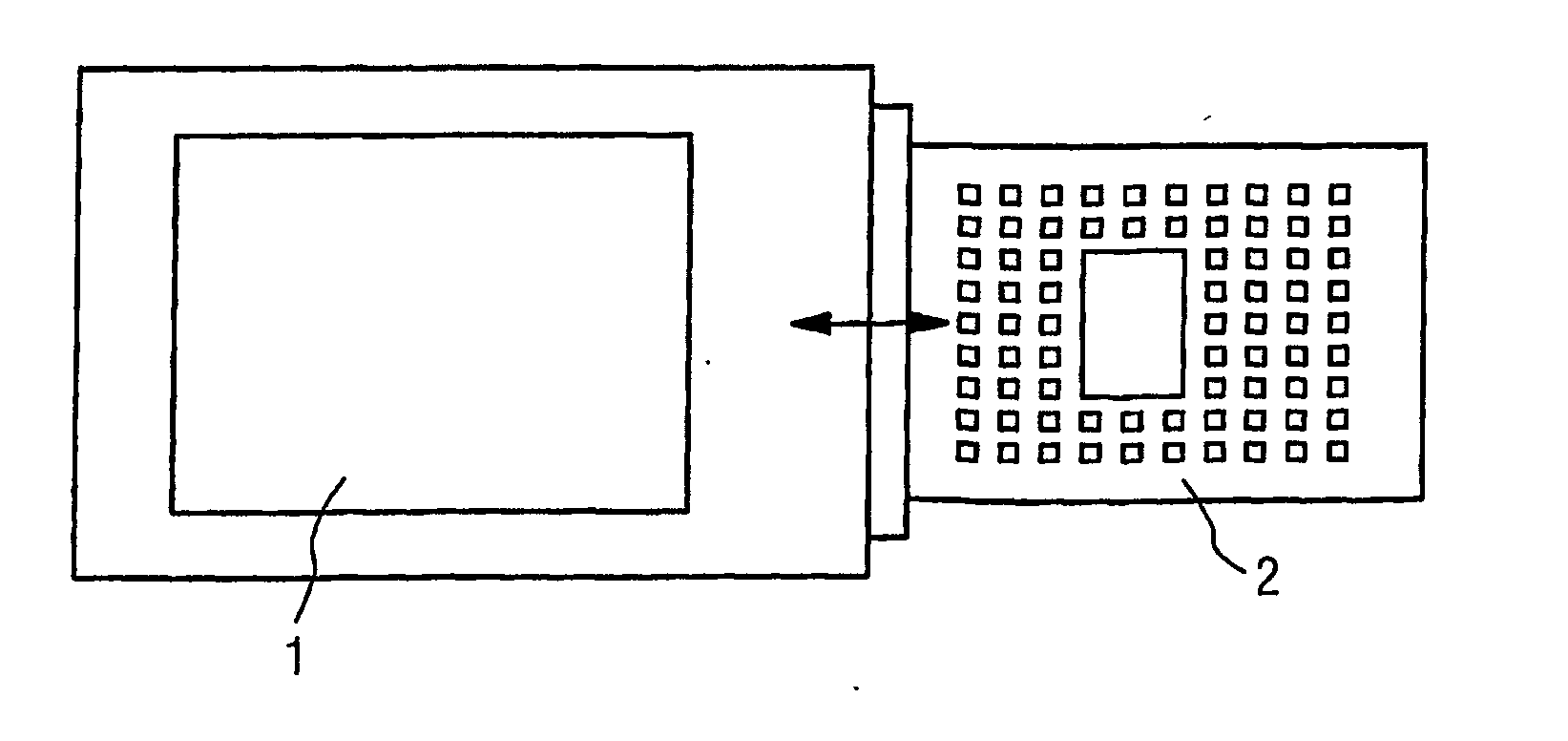Method for contacting at least one module for a wireless radio standards by means of at least one application
a wireless radio standard and at least one module technology, applied in the direction of coupling device connection, broadcast with distribution, instruments, etc., can solve the problems of large space occupied by connection options, unsuitable for miniaturization, unreliable contact, etc., and achieve reliable contact, high miniaturization, good ground contact
- Summary
- Abstract
- Description
- Claims
- Application Information
AI Technical Summary
Benefits of technology
Problems solved by technology
Method used
Image
Examples
Embodiment Construction
[0023]FIG. 1 shows the rear face 1 of a module of a combination according to the present invention, having a module and an application. The arrangement here has a connecting point 2 for a power amplifier. Furthermore, at least one ground contact 3 and at least one connecting point 4 are provided for a voltage supply. The smaller, rectangular contact surfaces represent interfaces 5 for an application with which contact is intended to be made. Alternatively, test points 6 for manufacture and test points 7 for development can be provided under the smaller rectangular contact surfaces. Furthermore, an RF contact point 8 may be provided.
[0024]FIG. 2 shows a mechanical apparatus for holding a module 2 in an application 1, as well as a module 2 which can be pushed into and out of this apparatus or the application 1. The mechanical apparatus includes, by way of example, a guide rail in the application 1, in which the module 2 can be displaced in an interlocking manner. When the module 2 is...
PUM
 Login to View More
Login to View More Abstract
Description
Claims
Application Information
 Login to View More
Login to View More - R&D
- Intellectual Property
- Life Sciences
- Materials
- Tech Scout
- Unparalleled Data Quality
- Higher Quality Content
- 60% Fewer Hallucinations
Browse by: Latest US Patents, China's latest patents, Technical Efficacy Thesaurus, Application Domain, Technology Topic, Popular Technical Reports.
© 2025 PatSnap. All rights reserved.Legal|Privacy policy|Modern Slavery Act Transparency Statement|Sitemap|About US| Contact US: help@patsnap.com


